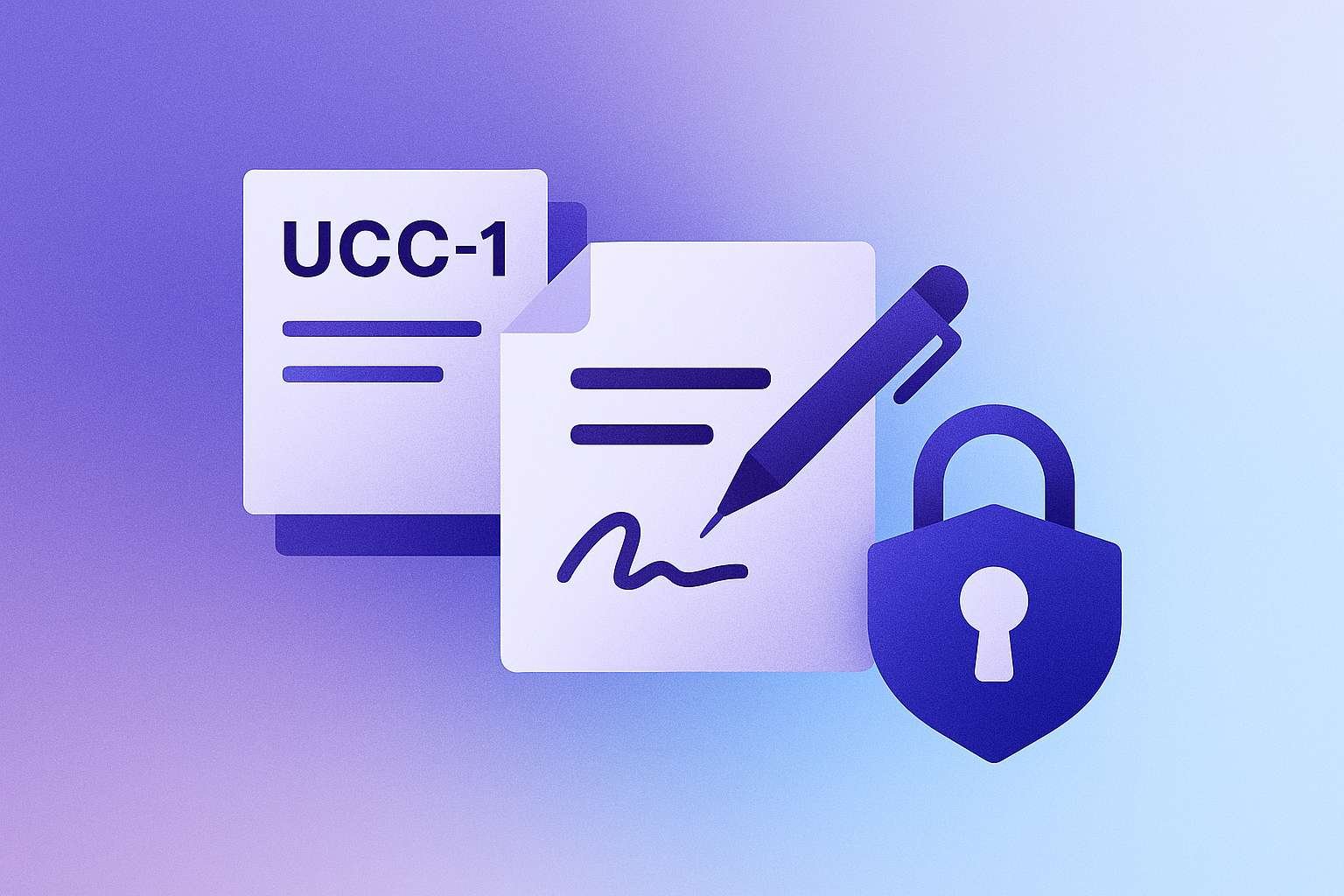UCC-1 and UCC-3 filings help lenders claim and manage rights to a business’s assets when giving a loan. A UCC-1 is filed to secure the loan; a UCC-3 is used to update, renew, or remove that claim. If done wrong or allowed to expire, lenders can lose their rights or fall victim to fraud. Baselayer automates this process—tracking filings, flagging risks, and keeping financial institutions compliant and protected.
What Is a UCC Filing?
A UCC filing is a public notice that a lender has a legal claim (called a lien) on a borrower’s business assets—like vehicles, equipment, or receivables.
What Is a UCC-1?
A UCC-1 is filed when a loan begins. It:
- Secures the lender’s rights to the business’s collateral.
- Lists the business, lender, and assets involved.
- Lasts 5 years unless renewed.
- First to file = first in line for repayment if things go wrong.
🛠️ Example: A bank lends $300K to a trucking company and files a UCC-1 on its trucks. That filing gives the bank legal claim if the company defaults.
What Is a UCC-3?
A UCC-3 updates or ends a UCC-1. It’s used to:
- Extend the lien before it expires.
- Terminate the lien when the loan is paid off.
- Change info like the business name or lender.
⚠️ Risk: Forget to renew? You lose your spot in line. Another lender can step in and claim the assets.
Why UCC Filings Matter for Lenders
- Due Diligence – Shows if a business already has loans or liens.
- Fraud Prevention – Detects fake or duplicate filings.
- KYB Compliance – Confirms a business’s real identity.
- Risk Management – Avoids lending against assets already tied up.
Common Problems (And How Baselayer Helps)
| Problem | Risk | Baselayer Solution |
|---|---|---|
| Misspelled names | Invalid lien | Smart name-matching |
| Expired UCC-1 | Lost priority | Renewal alerts |
| Unfiled terminations | Blocked credit | Termination detection |
| Manual tracking | Missed risk | Fully automated alerts & insights |
Baselayer: UCC Monitoring Made Easy
Baselayer offers:
- Real-time UCC-1 and UCC-3 coverage
- Alerts for expiring or risky liens
- EIN and KYB matching
- Risk scores tied to lien data
- AI-powered fraud signals
No more spreadsheets. No more guessing.
FAQs
1. What’s the difference between UCC-1 and UCC-3?
UCC-1 starts a lien. UCC-3 updates or ends it.
2. What happens if a UCC-1 expires?
You lose legal claim. Another lender can file a new one.
3. How does Baselayer track UCC filings?
We monitor filings across all 50 states in real time and alert you before issues arise.
4. Can Baselayer prevent fraud from duplicate liens?
Yes—our platform flags suspicious patterns and duplicate asset pledges.
5. Why not just use a legacy vendor?
Legacy vendors refresh data slowly. Baselayer pulls directly from state sources, often daily, and automates everything.
Want cleaner data, smarter decisions, and less manual work?
Learn more at baselayerhq.com
